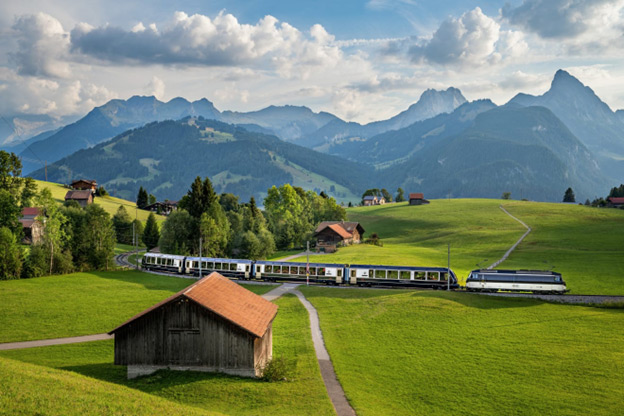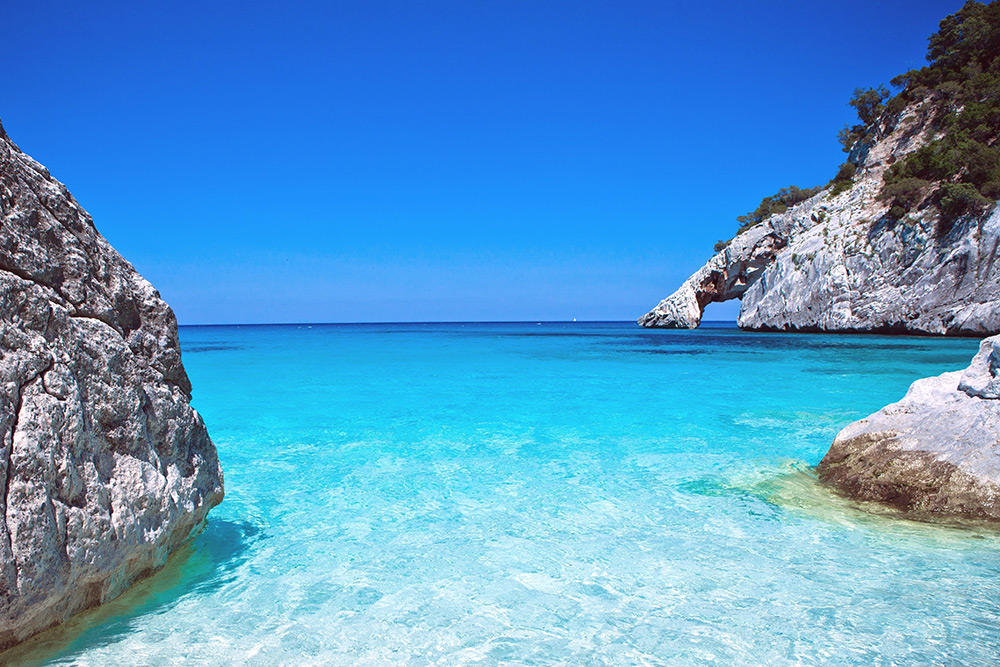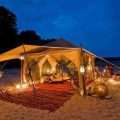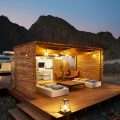Stumped by the stunning architecture, magnificent lamps and world-famous souqs, Bandana Jain returns drenched in the beauty of cultural paradise called Morocco.
Flanked by the Atlantic Ocean on the west, Mediterranean Sea in the north and the raging Sahara desert in its belly, Morocco regales visitors with its distinct charm.Morocco’s unique persona emanates from the blend of French and Spanish colonial influences and its innate Islamic character. Be it the roads lined with olive trees, oranges and swaying palm trees, or the mosaic-studded palaces or the crowded souqs, Morocco entices with a unique blend of cultures. The interweaving of European, Berber, and Arab influences results in an intricate and natural aesthetic shown through its hospitality, peaceful demeanor and impressive cultural offerings.
Here are ten must-do things in Morocco-
Jardin Majorelle

Perhaps the top most visited attraction of Morocco, Jardin Majorelle can be easily counted as one of the most glorious gardens across the world. The gardens are home to more than 300 plant species from five continents, mostly collected by Jacques Majorelle over several decades of globetrotting. The gardens were first opened to the public in 1947 but were abandoned after his death until Yves Saint Laurent and Pierre Bergé made it their mission to save them from property developers. The instagrammably stylish royal blue Musee Berbere building forms the centrepoint of the garden interspersed with geometrically symmetrical gardens making it a haven for some 9,00,000 annual visitors.
Tip- Tickets can be booked online. It is advisable to choose an early slot to avoid crowds.

Experience Morroccan bath /Hammam

A visit to Morocco is incomplete without a hammam experience which includes steam, scrub and a relaxing massage with aromatic oils. Agreed, this experience is readily available in the UAE, but getting it done in a traditional hammam in the land where the concept of hammam originated lends a special touch and we reckon it as an unmissable experience.
A private hammam is more like a treatment at a spa in luxurious surroundings although you can find hammams of different shapes, sizes and price-points in every city of Morocco to suit your budget. In a typical Hammam setting, body is treated to steam in a hot room and then rubbed by a Moroccan black Beldi Soap followed by a scrub by a traditional kessa (scrubbing mitt). After a quick shower, a nice relaxing massage is the highlight of this hammam experience leaving you refreshed and invigorated.
Where-Lotus de Bain in Medina. The massage and bath cost us 250 AED per person but cheaper options are readily available.
Stay in a Riad

Riads are traditional Moroccan hotels- some of them are exquisite properties, while others are more humble traditional homes converted into hotels (or riads). They are more like traditional homes often marked by a basic door in an alley way, unassuming and modest. Once inside, the senses come in touch with the glorious and ceiling-less majesty. Heavy wooden doors, traditional seating areas, courtyards dotted with fountains surrounded by gardens, tiled floors and walls and antiquities and traditional hospitality are some intrinsic features of a riad. The courtyard usually forms the centerpiece of this glory with rooms connected to this central space. If you are looking to fall into the rhythm of Morocco, its culture, design, art and flavors, stay at a riad is a must.
Where- Le Sultana Riad.
Al Badia Palace


This 19th century building is nothing short of a historical splendour. With rooms decorated in stunning stuccos, paintings and mosaics surrounded by magnificent Islamic gardens, this palace is a must visit in Marrakech. It mesmerises with magnificent Moroccan architecture, some of which could even put the world- famous Taj Mahal to shame. Geometrically symmetrical courtyards, fountains standing on colourful tiles, intricately carved sidewalls combined with gardens studded with orange, pomegranate, pineapple trees make this place is an unmissable tourist delight.
Tip-Badia Palace is great inspiration for architects and interior designers, possibly you could pick cues for your own home.
Lose yourself in the famous Marrakesh souq


Souqs are not just market places, they are the great places to engage in the Moroccan culture. The world-famous Marrakesh souq is a must visit to soak in the local culture. These buzzing markets sell everything from clothes, pottery, lamps, jewellery and handicrafts. The bustling atmosphere, the bargains and the thrill of haggling is often a big part of the reason why people take a trip to Marrakesh Souq. The narrow alleyways with overflowing merchandise snake off to more thin passageways with even more goods. Whatever the items, be it rugs, jewellery, lamps, souvenirs or potteries, nothing beats the charm of shopping in Marrakesh souq, which finds a top place in every Moroccan itinerary.
Tip– Haggling (negotiating a price) is encouraged. Never pay the first asking price, better to go with a guide.
Revel in the beauty of blue houses in Chefchaouen

Chefchaouen with its multi-faceted heritage that goes far beyond its striking appearance is Morocco’s best -kept secret. Commonly referred to as the blue pearl of Morrocco, Chefchaouen is the prettiest city in Morocco and I am happy I didn’t miss on visiting the Chefchaouen magic. This calm and quaint hamlet with 40,000 something population prides in its unmistakable skyline of indigo-painted houses. Awash in azure shades, the most popular theory is that it was painted blue by the Jews who fled to Chefchaouen to escape the Spanish Inquisition in the 15th century.
Because of these blue houses, the city has a mystical charm to itself and makes it an unmissable delight. The blue-façade buildings of Chefchaouen are enigmatic and are pure instagram gold. Lose yourself in the maze of these intriguing staircases and houses and discover the various pitstops that provide picturesque photo opportunities. While you are at it, prepare to be captivated by the simplicity of the locals who will win you over with their warmth and smiles.
Tip-Wear comfy, sneakers or footwear as the terrain could be tacky with slopes and stairs.
Visit Kasba Udayas in Rabat

It’s not everyday that you come across a city caged inside an enchanting fortress located on the footsteps of a mighty ocean. Kasbah Oudayas is one such unique walled area in Morocco. Dubbed as a city within city, it might sound a bit clichéd but once you’re inside the Kasbah you really do feel like you’ve entered another world altogether. The whitewashed walls that line the narrow alleyways remind you of distant medinas in northern Morocco like Chaouen more than the sprawling city of Rabat that surrounds the fortress. It’s as if the mighty walls cut the kasbah off from outside influences. With its quiet alleyways,it’s a jewel worth exploring. Vibes in this location are so charming that they are often compared to Santorini in Greece with whitewashed houses, stairs closing into the sea.
Tip- Walk down the Kasba till the end leading to the stairs that take you to the footsteps of the Atlantic Ocean.
Try Moroccan cuisine


While discovering hidden gems of Morocco rates high on the Moroccan itinerary, trying the delicious Moroccan cuisine is an equally must-do thing while in this enchanting country. Agreed, the choices for vegetarians are quite limited, but whatever be the restricted choices they turned out to be quite healthy and delicious. Moroccan cuisine is a merger of Arab, Berber and southern Europe food influences. So, a delicate mix of spices and herbs and boiled vegetables is quite evident in the Moroccan dishes – Tagine, Couscous with veggies, Moroccan soup, Pastilla, Potato kebabs and the famous Moroccan salad. Bread is used as a usual accompaniment for the meal and mint tea is the beverage of choice.
Tip– Highly recommended restaurants for vegetarians are Les Fleurs in Casablanca, Le Sultana in Marrakesh, Darr-e- salaam restaurant with Oriental entertainment and stunning interiors and history backed by Alfred Hitchcock movie shoot in its premises is highly recommended. Also binging into some street food in the Marrakesh Souq is also a great idea.
Buy organic argan oil

Argan oil is a plant oil produced from the kernels of the argan tree (indigenous to Morocco and southwestern Algeria). Highly nutritious in nature, it is consumed in several foods and also used to combat dry skin, dull hair, and damaged nails. Naturally infused with essential nutrients, antioxidants and anti-inflammatory properties, argan oil moisturizes skin without clogging pores, protects from UV rays & reduces stretch marks. It doesn’t come as surprise that Argan Oil has long remained the beauty secret of Moroccan women.
Tip– We bought Argan Oil from a home-grown entrepreneurship in Marrakesh Medina which sells diverse varieties of organic argan oil to the discerning customers.
Visit al Hussaini Mosque in Casablanca

Al Hussaini Mosque gets its ticket to fame as it is partly built on reclaimed land on the shores of the Atlantic Ocean. Hence the adage that it is located between sky, land and water seems pretty much meaningful. This mosque took fourteen years to complete and is replete with ornately carved wooden ceilings, a retractable ceiling and hand-crafted marble wall. The Prayer Hall can accommodate up to 25,000 people and there is space for 80,000 people to pray outside the mosque on the courtyard.
Tip– There’s a spa in the premises of Hussein II Mosque called Hammam of Husseini Mosque. If you wish to experience Moroccan Bath there, pls book in advance.
Useful tips for Morocco travel-

- English is not widely understood, especially in smaller towns. French is widely spoken and understood.
- Flight from Dubai to Morocco is eight hours duration.
- Good itinerary should consist of half day in Casablanca, one day in Chefchaouen, 2 days in Marrakesh, one day in Fez and half day in Rabat
- Best time to visit Morocco is May and September. We visited in July- day time was hot but evenings were quite pleasant.








Leave a Reply